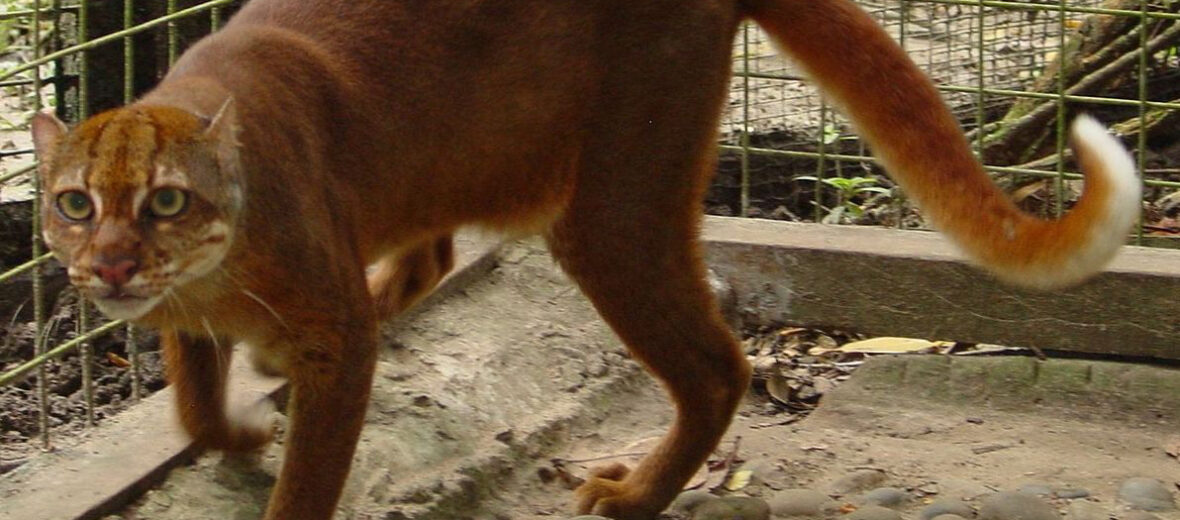
The Borneo Bay cat, aka Bornean cat, Bornean marbled cat, Bornean red cat, or Bornean Bay cat, is considered 1 of the rarest wild cat species in the world, to date. Nearly 1 century after their discovery, researchers were able to finally study these elusive kitties. They prefer forests, swamps, mangroves, and river habitats. Bornean cats can only be found, in the wild, on the island of Borneo. Due to their small distribution and the fact that there are only an estimated fewer than 2,200 mature cats remaining in the wild, these felines are listed as Endangered by the IUCN. Sadly too, their numbers are decreasing.
First the Stats…
Scientific name: Pardofelis badia
Weight: Up to 8.8 lbs.
Length: Up to 21 inches, plus up to a 15 inch tail
Height: Up to 14 inches
Lifespan: Up to 17 years
Now on to the Facts!
1.) Like many other cats, Bornean Bay cats are nocturnal (active at night).
2.) Bay cats prey on rats, mice, monkeys, and birds. They occasionally go after domestic animals, like poultry.
3.) A group of cats is called a destruction, pounce, clowder, or clutter.
4.) Oddly, the hair on the sides of its crown, cheeks, nape, and the front of its throat grows forward, rather than backward.
5.) Sans protected areas, habitat loss due to extensive commercial logging and palm oil plantations is their primary threat to existence.
But wait, there’s more on the Borneo Bay cat!
6.) Based solely on genetic and morphological evidence, the bay cat is most closely related to the marbled cat and the Asian golden cat.
7.) Nothing is known of their reproductive habits as this cat is not easily studied nor does it live long in captivity.
Did you know…?
Being elusive is in their nature. In fact, after 5,034 nights of photo trap recording, only 1 bay cat was spotted.
8.) Due to witnessing these cats in the trees, it is presumed that they are either arboreal (spend their lives in trees) or are just agile climbers.
9.) Discovered in the 19th century, the first live specimen was not captured until 1992. This specimen was a sickly female.
10.) Sadly, less than 6% of Indonesia’s and Malaysia’s land is protected. So the plight of these rare kitties is uncertain, at best.
Now a Short Borneo Bay Cat Video!
Be sure to share & comment below! Also, check out the Critter Science YouTube channel. Videos added frequently!
Want to suggest a critter for me to write about? Let me know here.



